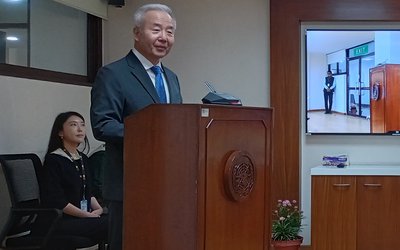
“In fiscal year 2013/014, we succeeded in restricting the load-shedding to a maximum 12 hours per day. This was possible due to sound operation of the power system, to ensure filling up of the Kulekhani reservoir at the onset of the dry season and a comparatively wet monsoon," writes officiating managing director of Nepal Electricity Authority Ram Chandra Pandey in his annual report published in August 2014.
“We will be very happy if we limit power cut to 12 hours again over the coming year. Given the unfavorable monsoon and half-filled Kulekhani reservoir, Nepal’s load shedding will depend upon the supply of electricity from India,” Pandey told the New Spotlight.
His comments show harsh winter days without light and a bleak future for the power sector in the months and years ahead. Even if Pandey realizes his determination, Nepalese will still have to live without power for 12 hours daily. In the worst scenario, the electricity will be erratically cut for indefinite periods.
“NEA’s current huge shortfall of supply over demand cannot be removed outright and this is bound to remain so for 23 more years. For the intervening period, some measures, among others, will be pursued to restrict the number of load shedding hours to 12-14 per day per consumer during the dry session,” said Pandey.
Energy demand of the Integrated Nepal Power Supply System in fiscal year 2013/014 was estimated at 5,909.96 GWh. Out of which only 4,631.51 GWh was supplied and the remaining was restored through load shedding. Nepal imported 1072.23 GWh from India.
According to load forecast, Nepal needs 5609.9 GWh of energy in 2014/015 but there is a supply of 1426.4 MW in peak load. The demand of energy in 2015/016 will be 7053.8 GWh with peak load of 1542.6 MW. As per the NEA forecasts, which many see as just conservative estimates, Nepal will have full energy by 2018 only after the completion of Upper Tamakoshi. However, even then, Nepal will continue to have deficit of energy during the winter.
Politicization and Mismanagement
Although NEA has four to five projects with over 100 MW under construction, they are often delayed due to indecision and politicization. Constructed with the generous grants from Republic of Korea, 36 MW Chameliaya hydro power project, which is almost 96 percent complete, is now uncertain due to the direction given by the Public Accounts Committee.
Mired in political uncertainty from the beginning, Chameliya Hydropower project is the victim of politics and administrative indecisions. Had NEA’s management intervened in time, the project would have completed long back. Due to this indecision, Nepal has already lost its credibility in Korea.
Kulekhani III project has been facing a similar situation. Inefficiency of Nepal Electricity Authority and unnecessary intervention by CIAA hampered the smooth completion of the project. The project is almost 90 percent complete and will begin to generate energy soon in case of early decision.
The Trishuli 3 project has also suffered a lot. It landed in controversy for almost a year on the issue of augmentation. Finally, it is in the process of completion. However, the transmission line will definitely create the trouble for it.
The construction of Tanahun Hydropower has already been delayed as the file regarding the selection of the consultant now has reached at the CIAA. Nobody knows when the CIAA clears the file. The commencement of 140 MW hydro power project is now uncertain and any delay in the construction will have to bear heavy cost. Even if the CIAA gives a clean chit, nobody is sure what the response of committees of Legislature Parliament will be on this.
Private Sector
The situation of Independent Power Producer is also not good as a number of power projects are facing problems to evacuate power from the project due to lack of transmission lines. Electricity generated by small projects, 5 MW in Lamjung, 22 MW Mai and 10 MW Spring rivers, are wasted due to lack of transmission lines.
If transmission lines cannot be built in time, the power generated by 50 MW Upper Marsyangdi project will be wasted. Due to the lack of transmission lines, the projects in Kosi Corridor, Lamjung Corridor and Misti are facing trouble.
Despite its potential to make change happen, Nepal’s hydropower sector is in a mess itself. Given the current political scenario and power structure, there is no immediate cure in sight. As power sector is in trouble, there is no short cut to end the vicious circle of power cuts in the near future. The tragedy of hydro-rich country will be to live in the shadow of darkness.

Keshab Poudel
Poudel is the editor of New Spotlight Magazine.
- FM Dr. Deuba’s India Visit: Mission Aborted
- Mar 26, 2025
- AMBASSADOR MAEDA TORU: Warm Regards
- Mar 24, 2025
- PRO-MONARCHY MOVEMENT: Rising Dissatisfaction
- Mar 23, 2025
- Dr. PRABIN MANANDHAR: Person With Humility
- Mar 16, 2025
- US SUSPESION OF GRANT: Impact On Nepal
- Mar 10, 2025















